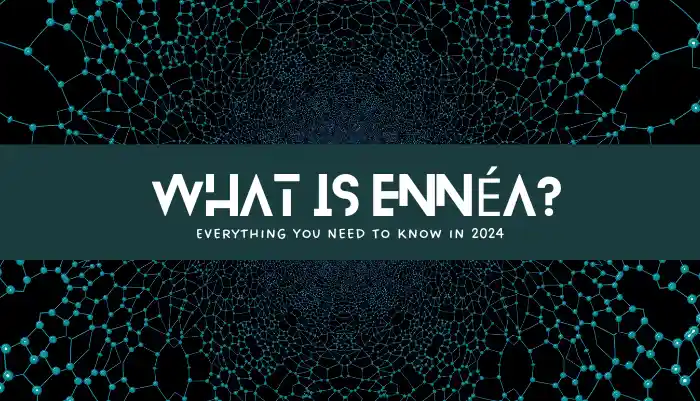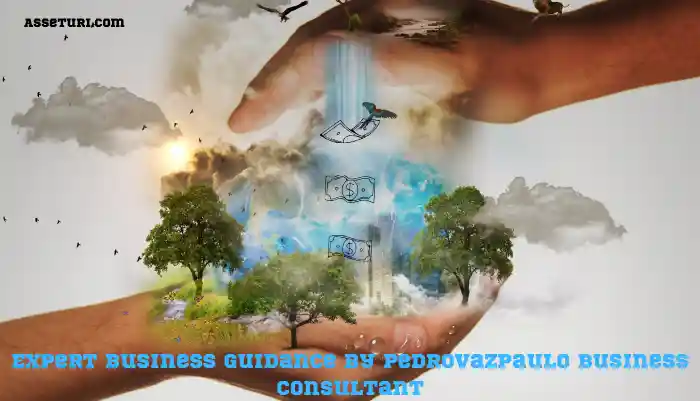What is Ennéa? Everything You Should Need To Know in 2024
Step into the world of Ennéa in 2024 – a tool that goes beyond typical personality quizzes to help you understand yourself better. It’s like a nine-point compass, revealing your core motivations, fears, and desires. This quick guide covers the basics, from the core principles to insights about each Ennéa type and practical tips for self-discovery and improving relationships. But Ennéa isn’t just about you – it also transforms leadership and team dynamics and sparks creativity. Get ready for a unique adventure in self-discovery, where Ennéa is the key to unlocking your true potential. Let’s start this journey together!
Unveiling the Mystery Of Ennéa
The word “Ennéa” echoes ancient Greek wisdom, going beyond passing trends. It’s more than just a quick quiz – it’s a deep framework, like a compass guiding you through self-discovery across nine different aspects. Unveiling the mystery of Ennéa means understanding the puzzle of yourself – grasping what drives your actions, desires, and fears. Using the symbolic Ennéagram, explore nine core types, discover your own, and open up a treasure chest of self-awareness. Yet, Ennéa goes beyond personal discovery; it’s a tool for building stronger connections. Picture smoother communication increased empathy, and conflicts transformed into opportunities for mutual growth. In the heart of Ennéa lies a meaningful journey into understanding yourself and others.
Origins and Founding of Ennéa
Ennéa, linked with the Enneagram, has mysterious origins. Some connect it to ancient Greece, where the numbers three, seven, and nine held significance in various fields. Early Christian mystics, like Evagrius Ponticus, had insights resembling the Enneagram’s core motivations.
In the 20th century, George Gurdjieff introduced the term “Ennéagram,” but his interpretation differed from the modern Enneagram of Personality. Oscar Ichazo, a Bolivian teacher in the 1950s, laid the groundwork for the current system, identifying the nine types and their traits.
Later, the Ennéagram became well-known in the West thanks to the work of Claudio Naranjo, a psychiatrist from Chile who integrated psychological viewpoints for greater accessibility. It has since changed, including business, spirituality, and psychology ideas. The Ennéagram’s journey combines traditional wisdom with contemporary applications, impacting leadership, relationships, personal development, and organizational progress.
Ennéa vs. Other Personality Systems
Ennéa stands out as a powerful tool for profound self-discovery in personality frameworks. Unlike Myers-Briggs (MBTI) and the Big Five, which emphasize preferences and broad traits, Ennéa dives into core motivations, fears, and desires that shape behavior. With its nine interconnected types represented by the Enneagram symbol, Ennéa promotes personal growth and empathy. The decision between Ennéa, MBTI, or the Big Five depends on individual preferences and goals, each offering a distinct path for understanding oneself.
The Nine Faces of Ennéa
The Ennéagram, a captivating map with nine intricate points, uncovers a diverse spectrum of human experiences. Each point represents a unique “type,” providing a distinct lens through which we navigate life. A new aspect of a persona appears at each turn on this remarkable journey of self-discovery, adding to the rich fabric of humanity.
- The Reformer:
Driven to improve the world, they embody ideals, principles, and organization. Perfectionism and self-criticism stem from a fear of being corrupt or flawed.
- The Helper:
They search for a sense of desire and love; they are kind, sympathetic, and giving. Excessive tolerance and self-sacrifice can result from a fear of rejection.
- The Achiever:
Ambitious, driven, and image-conscious, they pursue success and recognition. A fear of failure or worthlessness may fuel competitiveness and a need for external validation.
- The Individualist:
Creative, reflective, and sensitive, they seek authenticity and meaningful connections. Fear of being ordinary can lead to isolation and self-doubt.
- The Investigator:
Observant, analytical, and knowledgeable, they crave understanding and competence. Fear of incompetence can result in detachment and withholding.
- The Loyalists:
Efficient, secure, and reliable, they want safety and integration. Anxiety and hesitation can result from a fear of losing support.
- The Enthusiast:
They are active, impatient, optimistic, and seek excitement and mystery. They could act quickly and restlessly out of fear of being stuck.
- The Challenger:
Assertive, decisive, and confrontational, they seek control and autonomy. Fear of weakness or vulnerability can lead to anger and domination.
- The Peacemaker:
Easygoing, agreeable, and adaptable, they seek harmony and inner peace. Fear of conflict or separation can make them avoidant and indecisive.
Exploring these “faces” deepens self-understanding and fosters empathy for the diverse personalities shaping our world.
Read More: https://asseturi.com/geoe-where-nature-meets-design-in-2024/
Building Relationships through Ennéa
Embark on the Ennéa journey by understanding your Ennéatype, which reveals insights into your motivations and communication style, aiding in self-navigation. Explore the diverse characteristics of the eight other Ennéatypes within the Ennéagram, fostering empathy and building deeper connections by appreciating diverse perspectives. Customize your communication approach based on Ennéa types to enhance understanding and connection in various relationships.
Take Ennéa’s principles beyond personal connections and apply them in the workplace, where they can transform dynamics, improve collaboration, resolve conflicts, and unlock the full potential of individuals. Embrace Ennéa as a dynamic tool for continual personal growth, recognizing it as a compass for refining communication skills and nurturing meaningful connections throughout your life.
Applying Ennéa in Different Contexts
Ennéa goes beyond personal exploration—it’s a versatile tool that transforms leadership, team dynamics, workplace culture, and creativity. Leaders can leverage strengths, motivate teams, and resolve conflicts by understanding Ennéatypes. In teams, trust is built by recognizing diverse Ennéatypes, improving communication, and maximizing potential. Ennéa shapes organizational culture by creating a safe space, enhancing decision-making, and boosting employee engagement. On a personal level, it helps identify creative blockers, embrace strengths, and spark inspiration. Ennéa is an ongoing journey of unlocking success, improving relationships, and fostering personal and professional growth.
Ennéa’s Role in Modern Society
Ennéa, a powerful influence in our complex world, extends beyond personal growth. It acts as a bridge, fostering empathy and dialogue across divides. It enhances relationships and mental well-being, unlocking team potential in leadership, driving innovation, and shaping education. However, Ennéa is a tool, not a definitive answer, emphasizing the need for respectful use. By embracing its insights ethically, Ennéa has the potential to contribute to a more compassionate and collaborative world.
Key Features and Characteristics Of Ennéa
The Ennéagram, depicted by nine interconnected points, reveals a dynamic system that signifies different personality types. Knowing the strengths and weaknesses of each type aids personal growth and improves relationships. Arrows within the Ennéagram symbol indicate potential paths for development or stress, underlining the flexible nature of personality. Serving as a versatile tool for self-discovery, the Ennéagram finds applications in diverse contexts, promoting continuous learning and fostering meaningful connections. Significantly, ethical use is stressed, urging individuals to avoid stereotypes and appreciate the uniqueness of each person. Essentially, the Ennéagram holds significant power for gaining personal insights and positively impacting various aspects of life.
Addressing Concerns and Controversies Of Ennéa
Despite its popularity, the Ennéagram faces multiple concerns. Critics question its reliability due to limited scientific validation and variability in typing accuracy based on self-reporting. There are debates about cultural appropriation, commercialization leading to oversimplification, and concerns about a rigid framework reinforcing stereotypes. Additionally, conflicts with religious beliefs and resistance from traditional psychologists add to the challenges. Individuals are advised to approach the Ennéagram critically, seeking guidance from qualified practitioners for a more nuanced understanding.
The Future of Ennéa
The Ennéagram, a fusion of ancient wisdom and contemporary relevance, holds exciting potential:
- Tech Integration: Imagine AI generating personalized Ennéagram insights, revolutionizing self-awareness and growth guidance.
- Diverse Applications: Beyond individual exploration, Ennéa could impact sectors like education and healthcare, adapting approaches and fostering collaboration.
- Scientific Exploration: In-depth research may validate Ennéagram’s effectiveness, opening doors to broader acceptance in mainstream fields.
- Ethical Focus: Upholding ethical standards is crucial as Ennéa expands, ensuring responsible use and safeguarding individual well-being.
Guiding its future lies in our hands:
– Balanced Innovation: Embrace new possibilities while preserving core principles and ethics.
– Responsible Use: Safeguard its purpose through education and ethical guidelines.
– Inclusivity: Value diverse interpretations, making Ennéa applicable across different populations.
Approaching it with curiosity, respect, and ethical commitment unlocks Ennéa’s potential for a more compassionate and understanding world.
Conclusion
As we wrap up our exploration of Ennéa, we find ourselves at a juncture of potential. This ancient wisdom, revitalized for our times, presents a choice – will it serve as a tool for understanding, empathy, and connection, or will stereotypes mar it? The decision is ours to make. Let’s approach it with respect and humility, envisioning a future where Ennéa acts as a bridge, fostering understanding instead of creating barriers. The journey is in its infancy, and the most intriguing chapters lie ahead. The power to shape this narrative is in your hands.
FAQs
- What makes Ennéa different from other personality tools?
Ennéa stands out by digging into core motivations, going beyond surface traits. It’s a dynamic guide that evolves with personal growth.
- How does Ennéa impact workplace relationships?
Ennéa enhances workplace dynamics by promoting empathy, improving communication, and offering tailored strategies for conflict resolution.
- Is Ennéa a fixed label, or can it change?
Ennéa recognizes a dynamic personality, allowing growth while maintaining a consistent core type.
- Can Ennéa be used for personal growth beyond relationships?
Certainly, Ennéa is a potent tool for self-discovery, guiding individuals on a continuous personal development journey.
- How accurate is Ennéagram in predicting behavior?
Ennéagram provides insightful patterns, but individual choices play a significant role, making it more of a guiding tool than a strict behavior predictor.
Click Here to read more about Asseturi.














2 comments